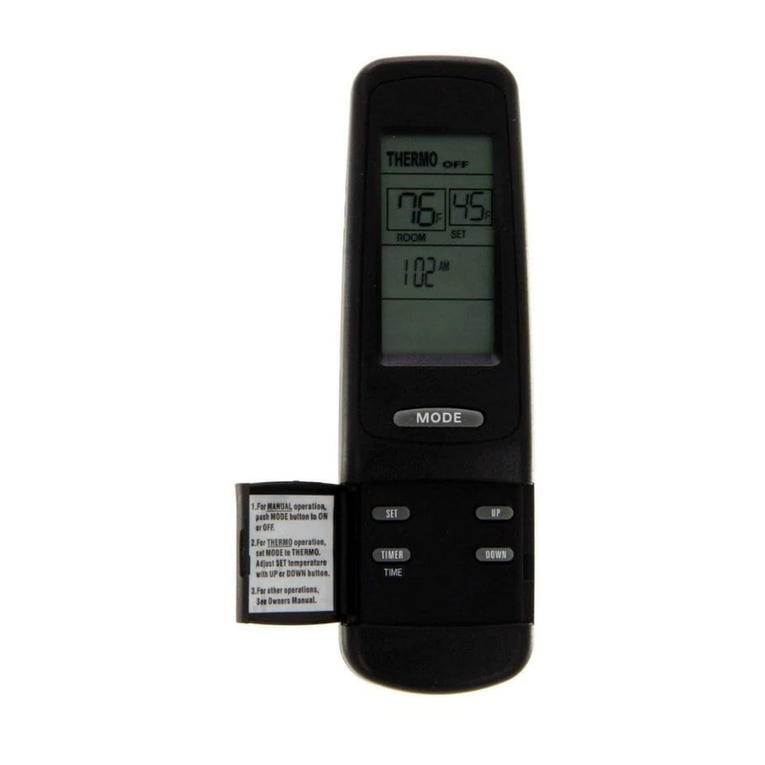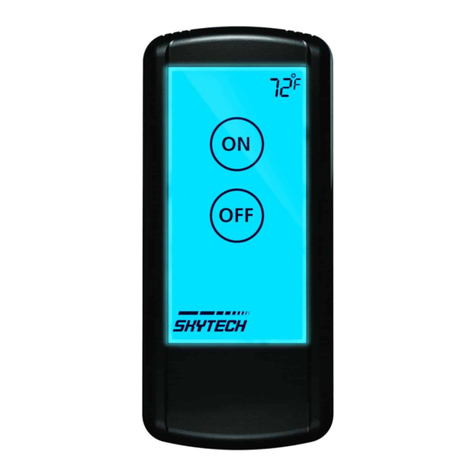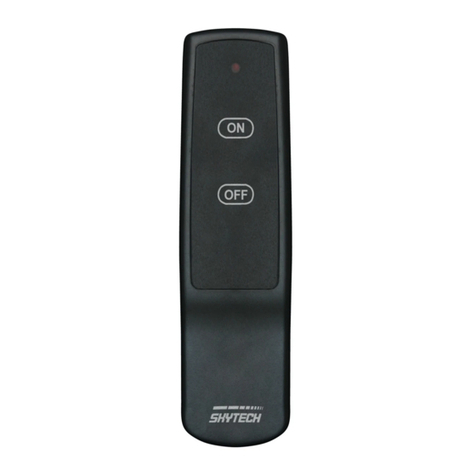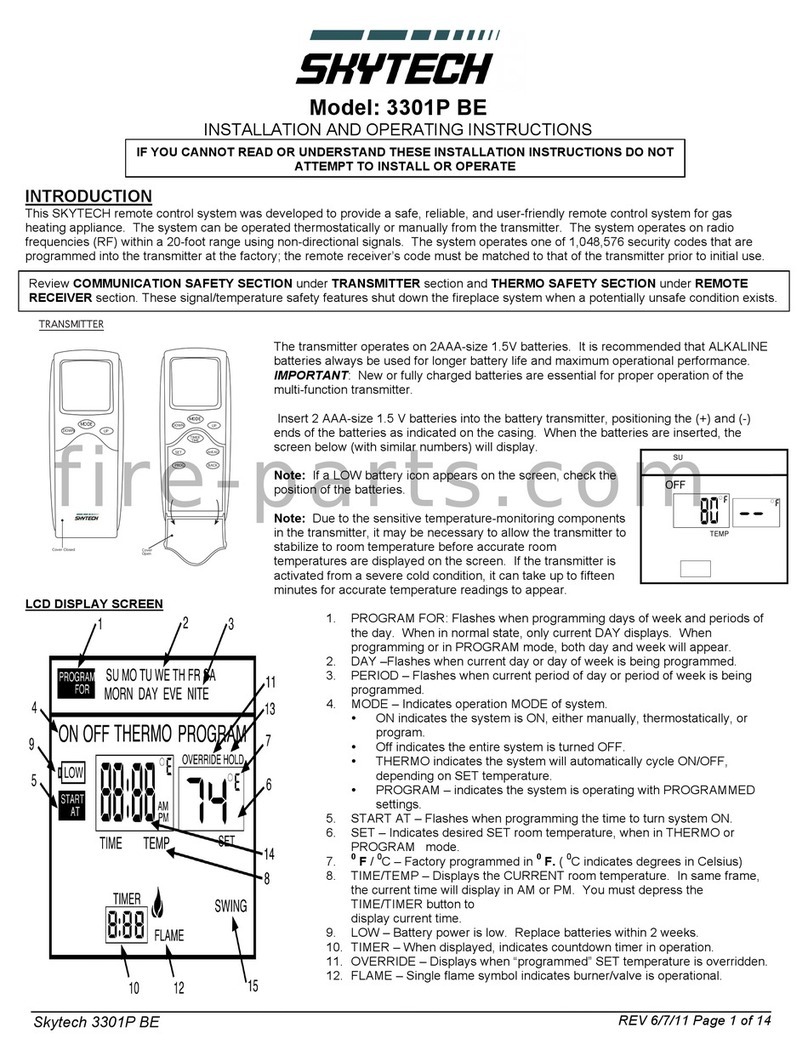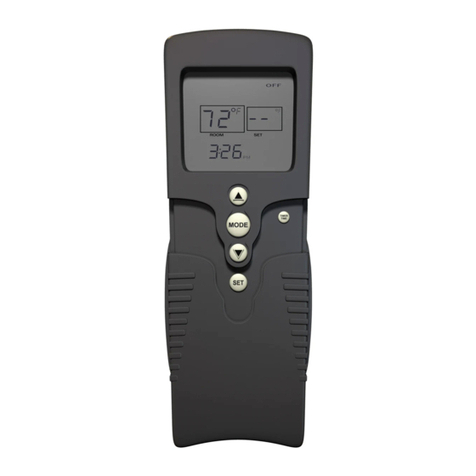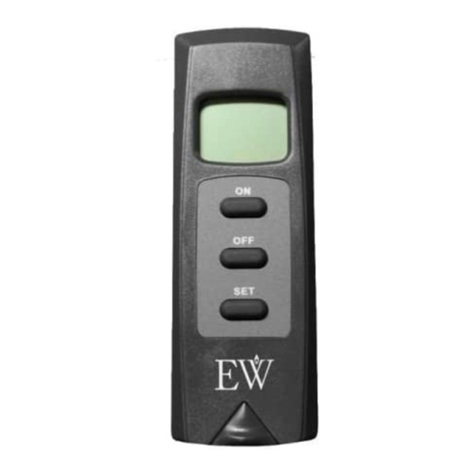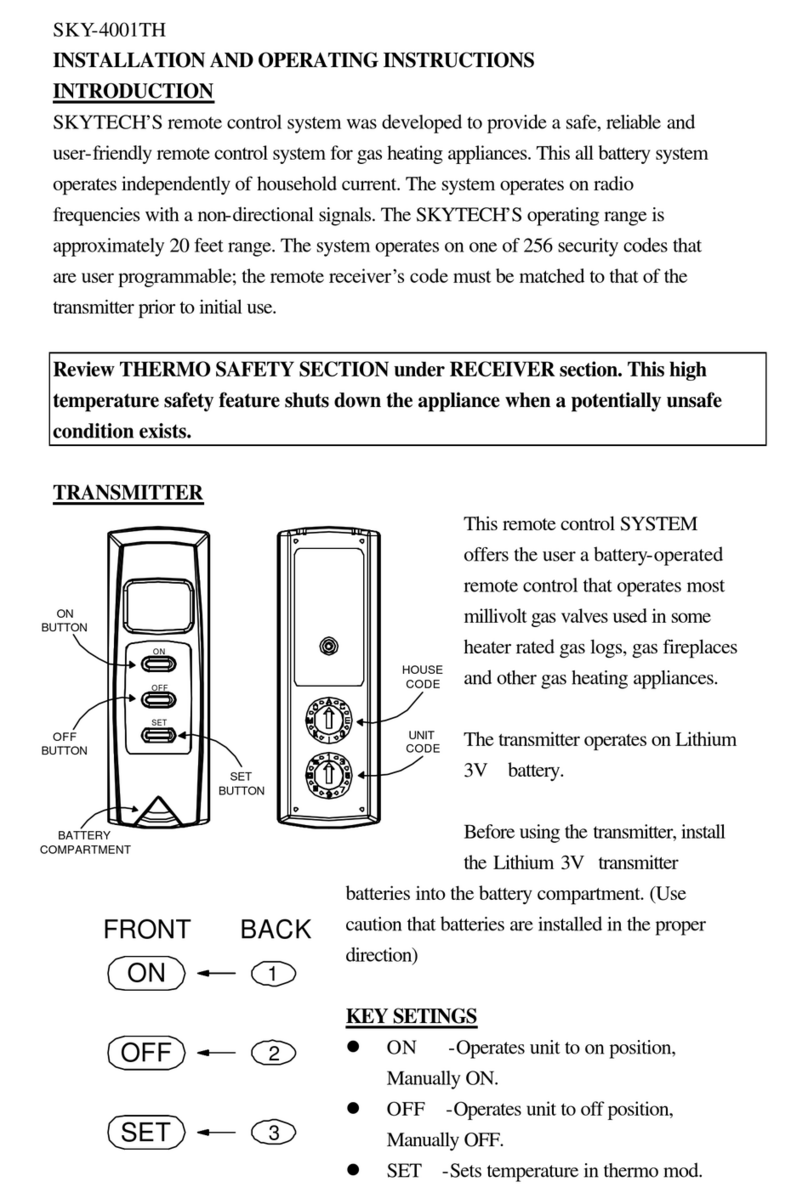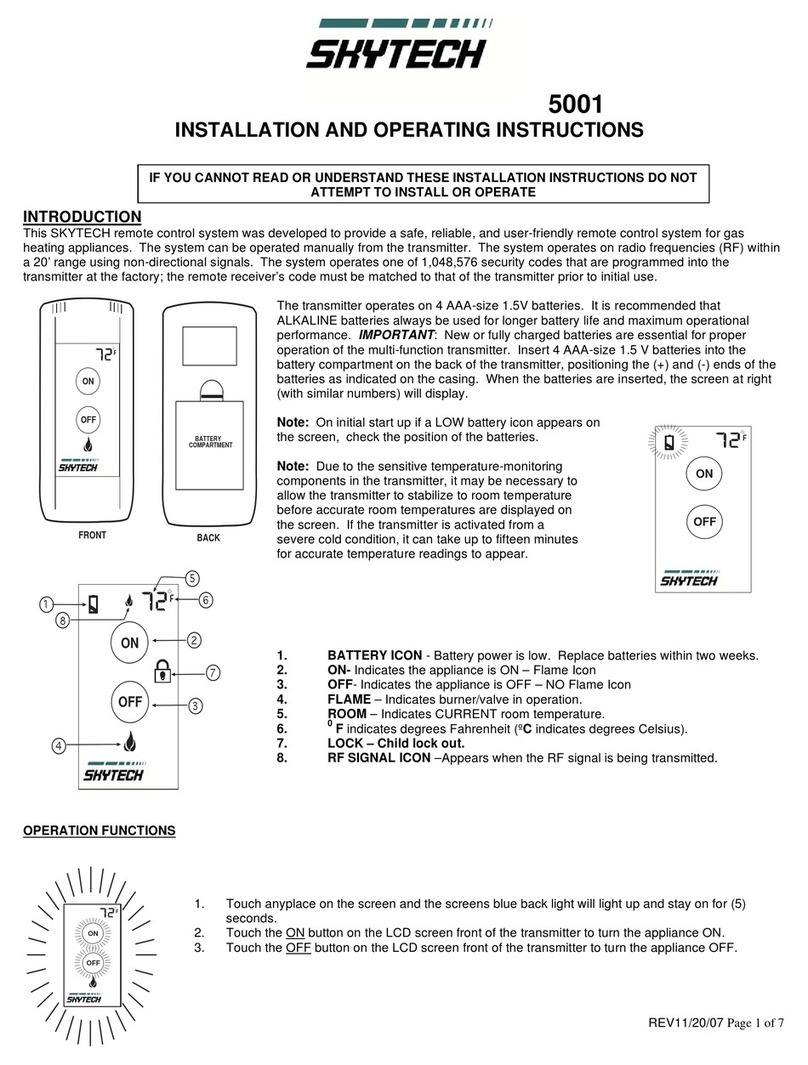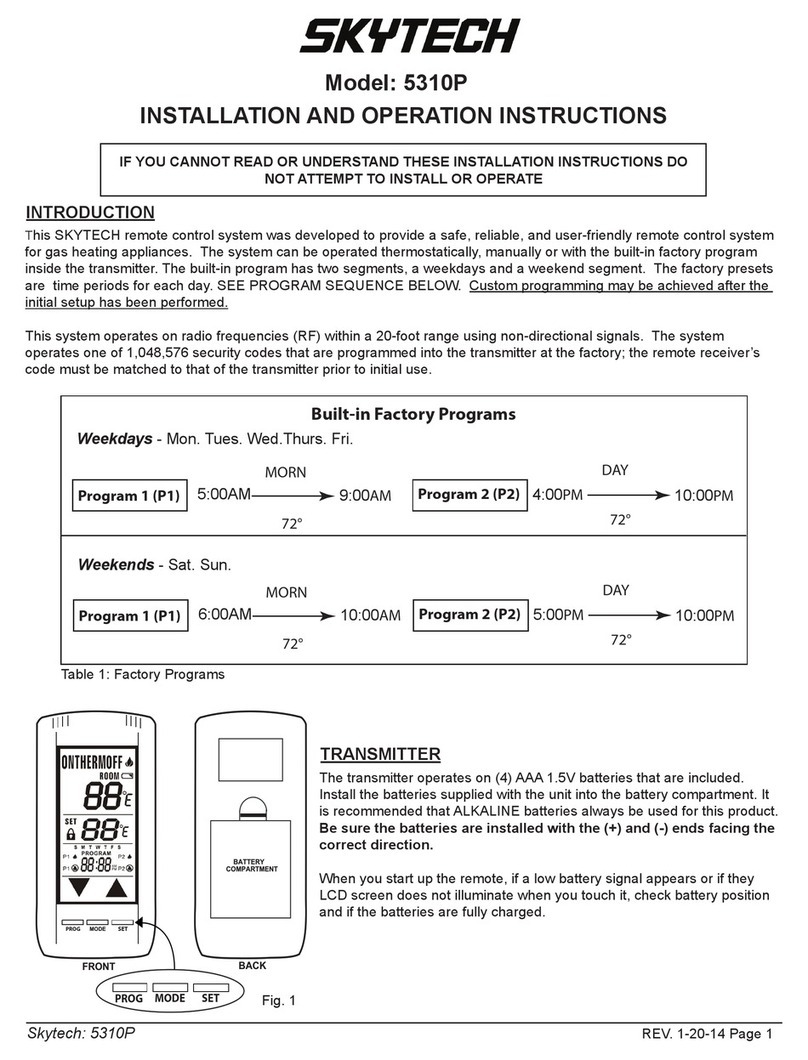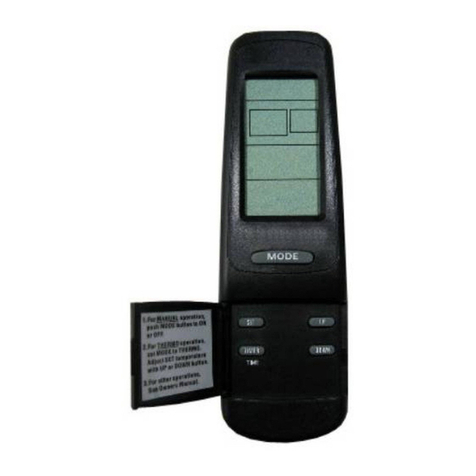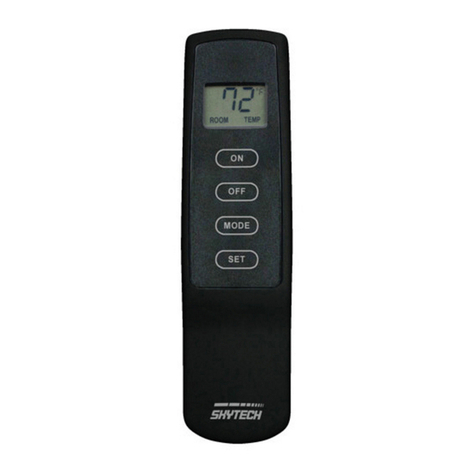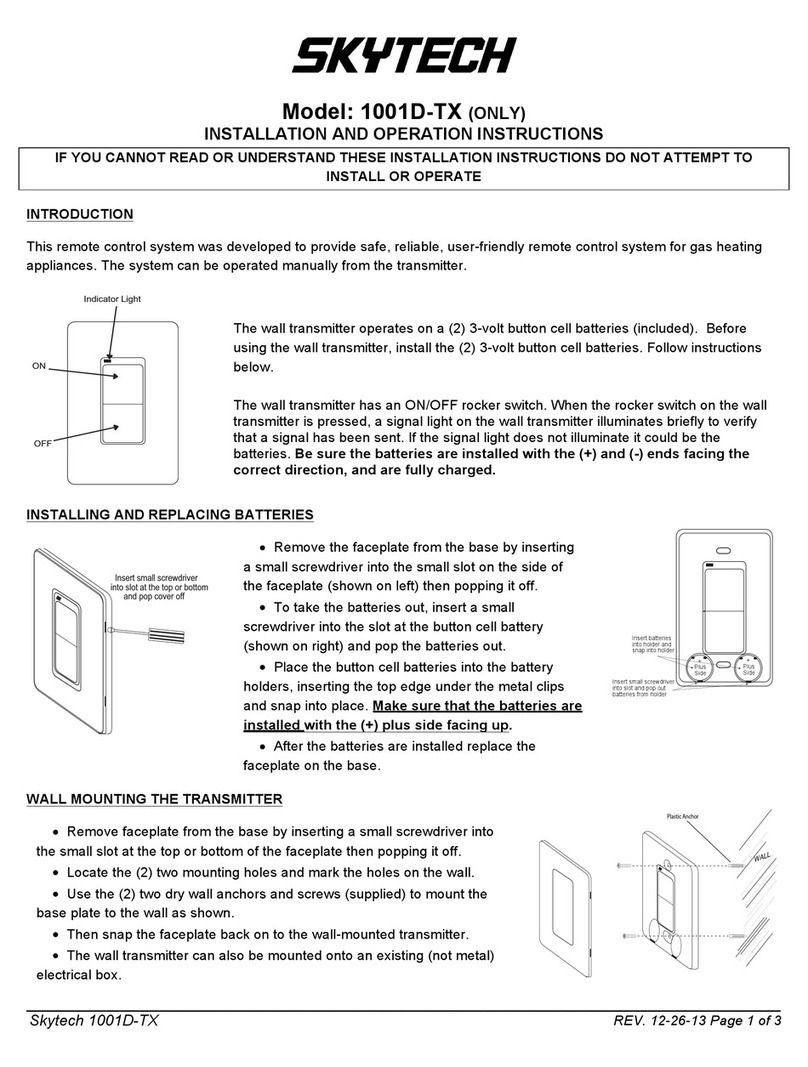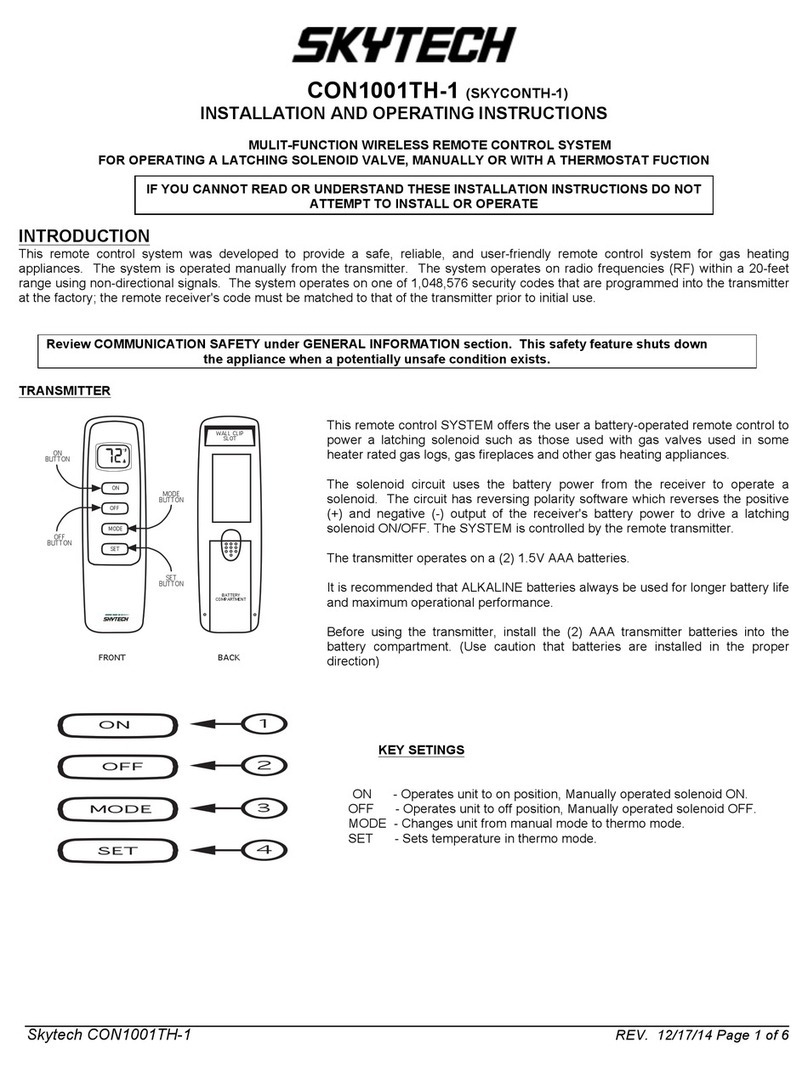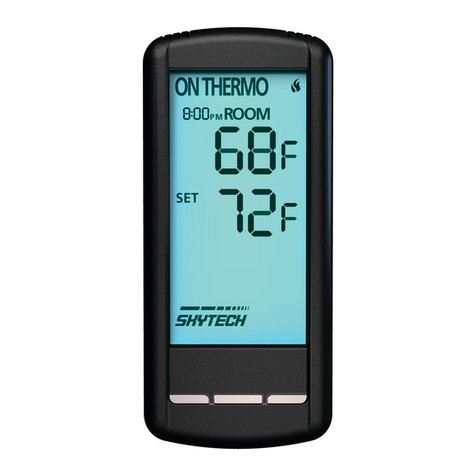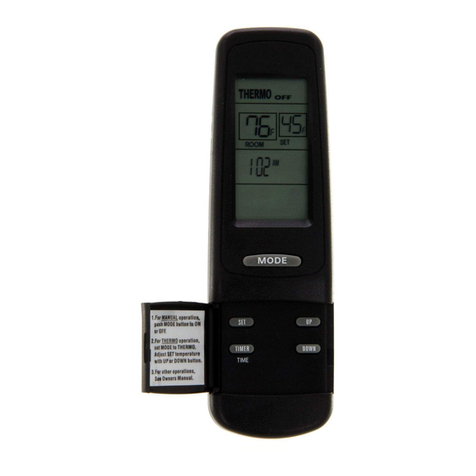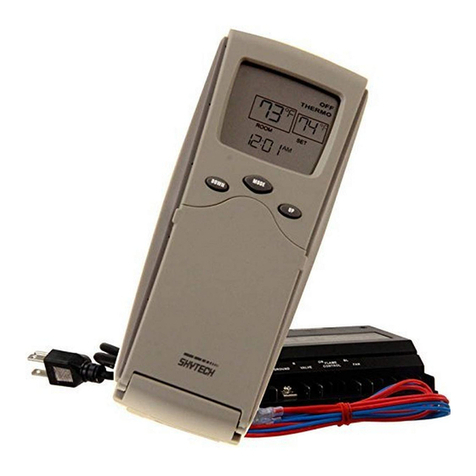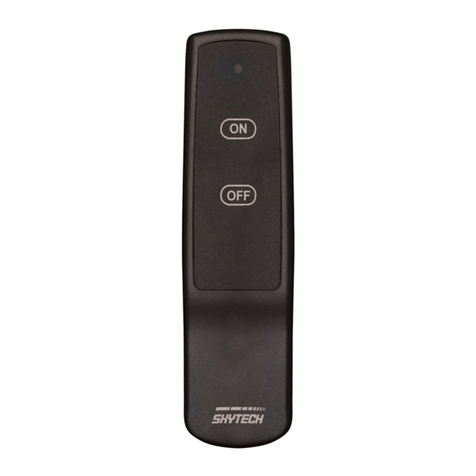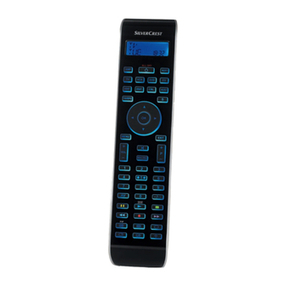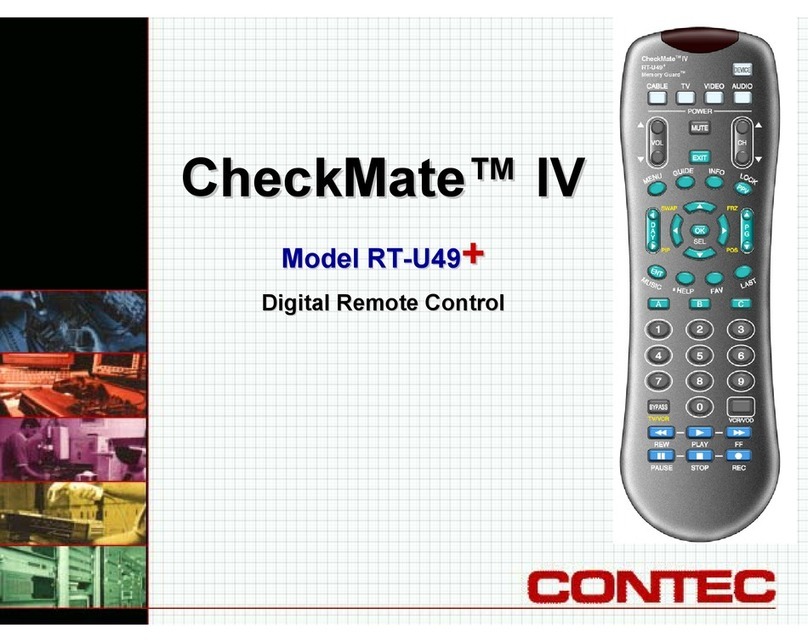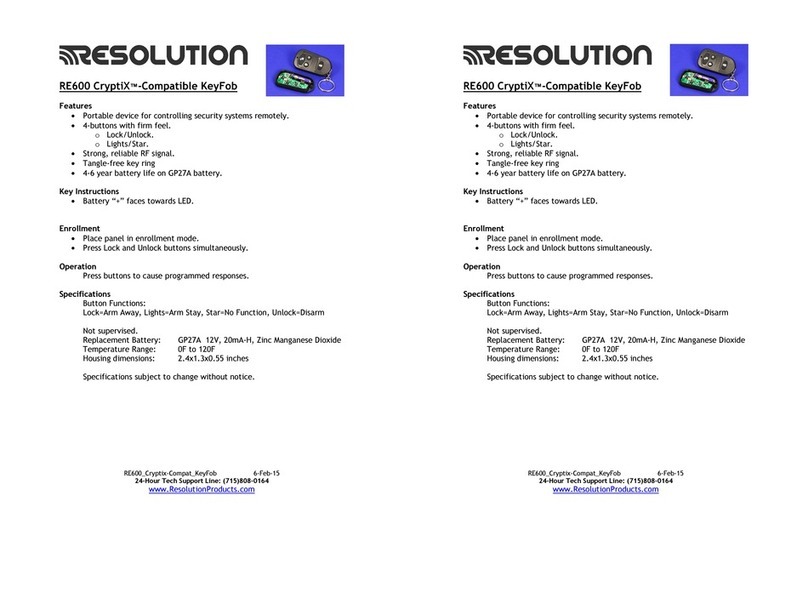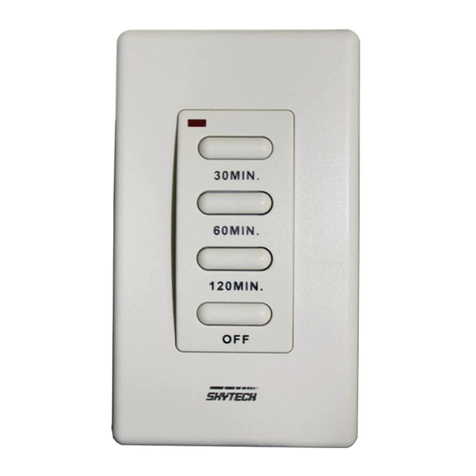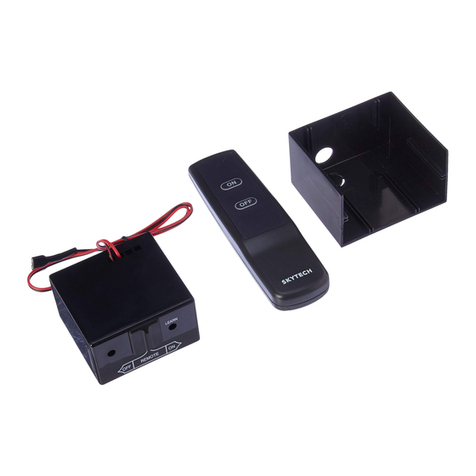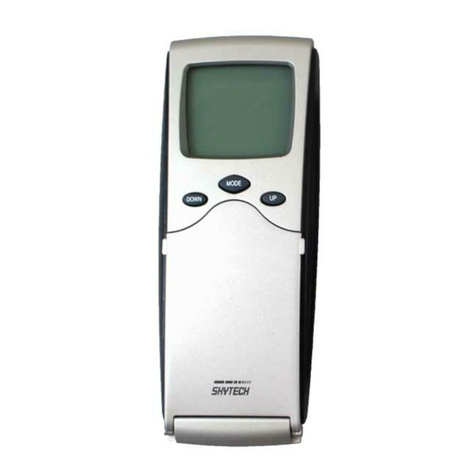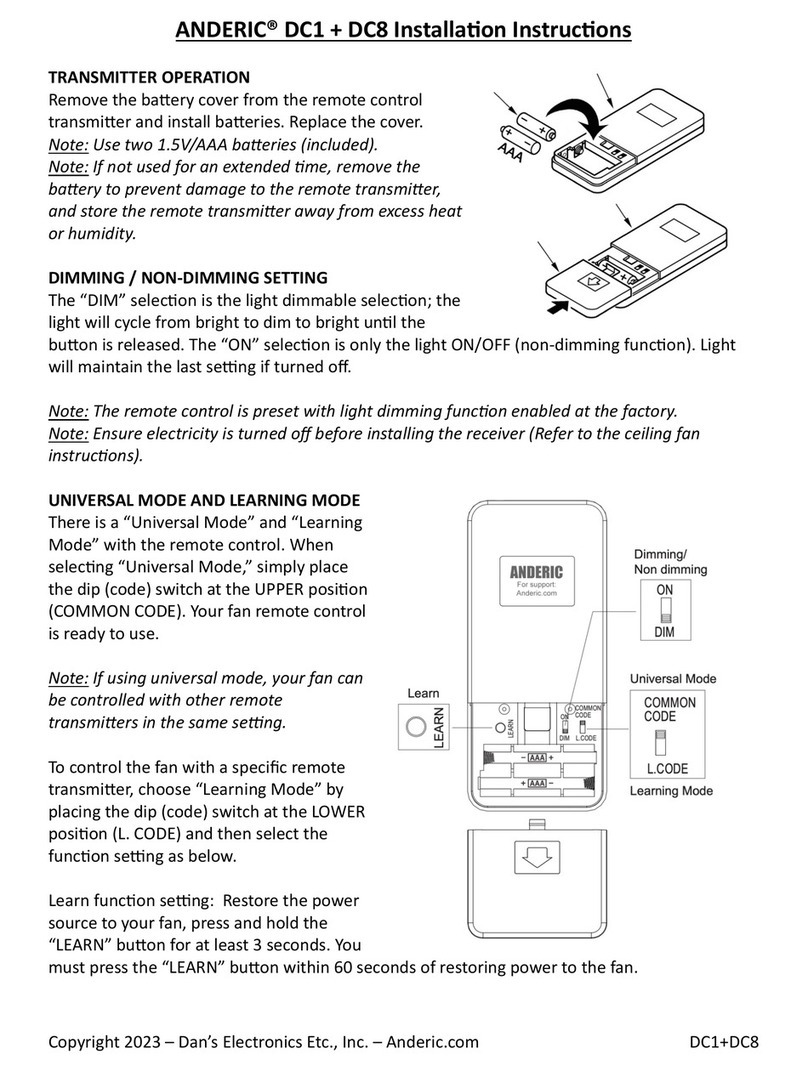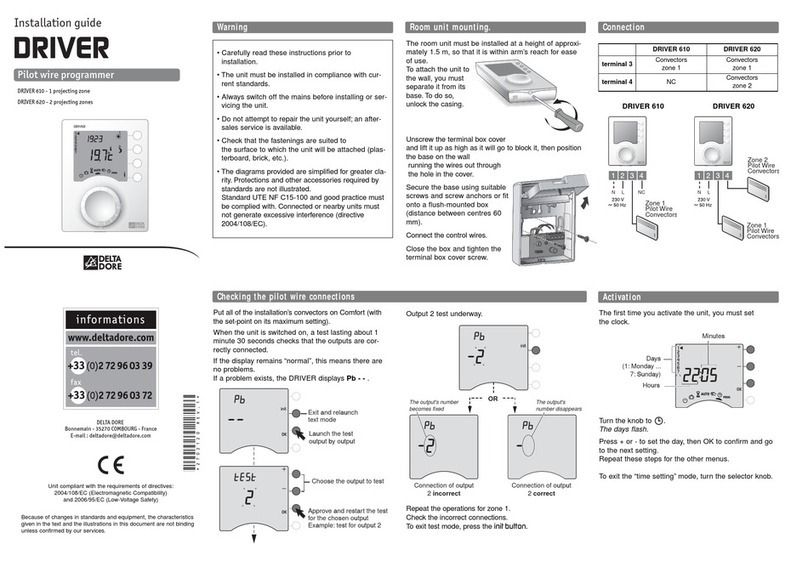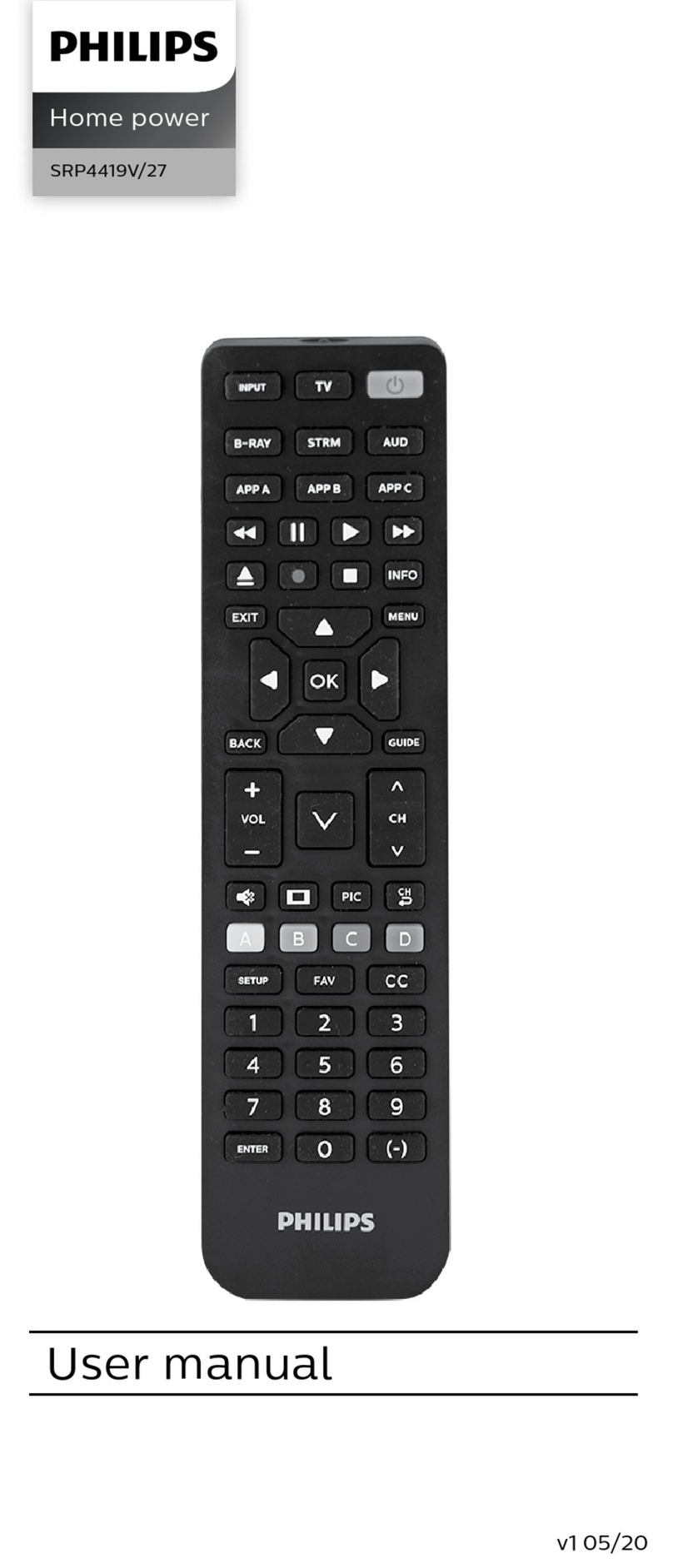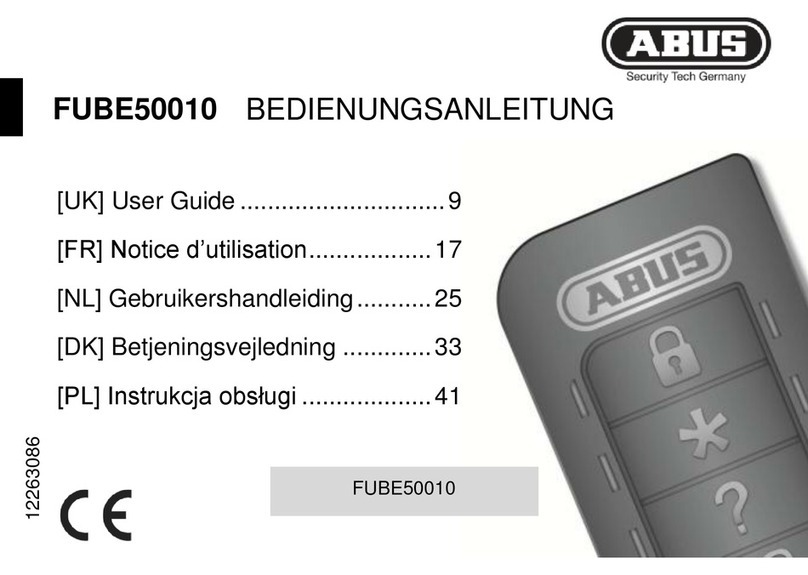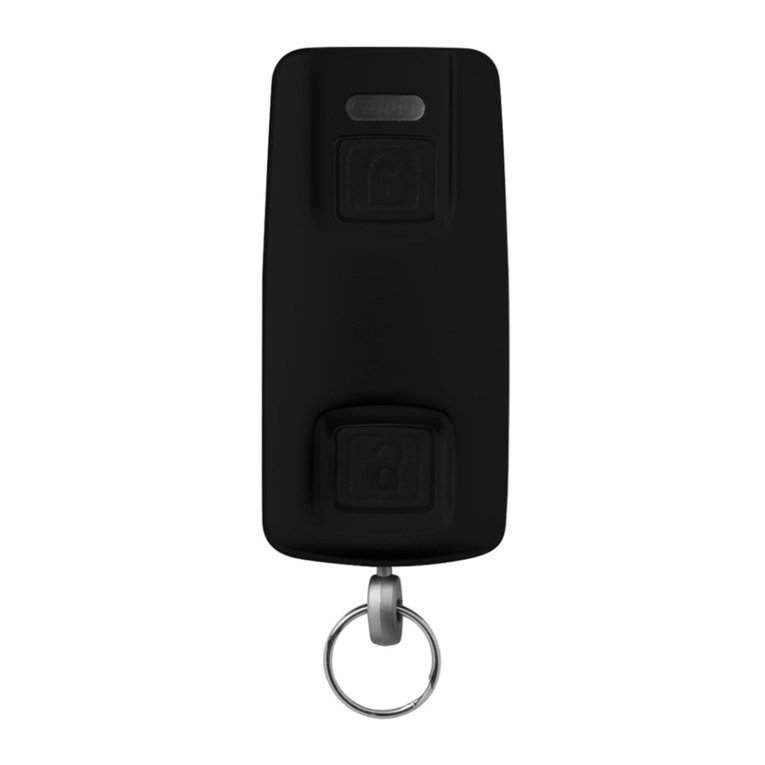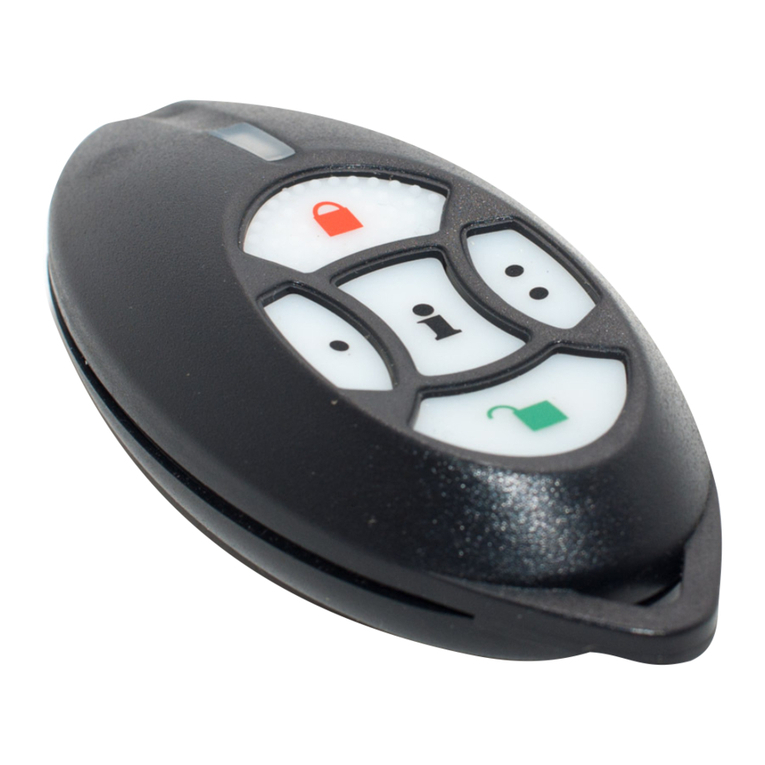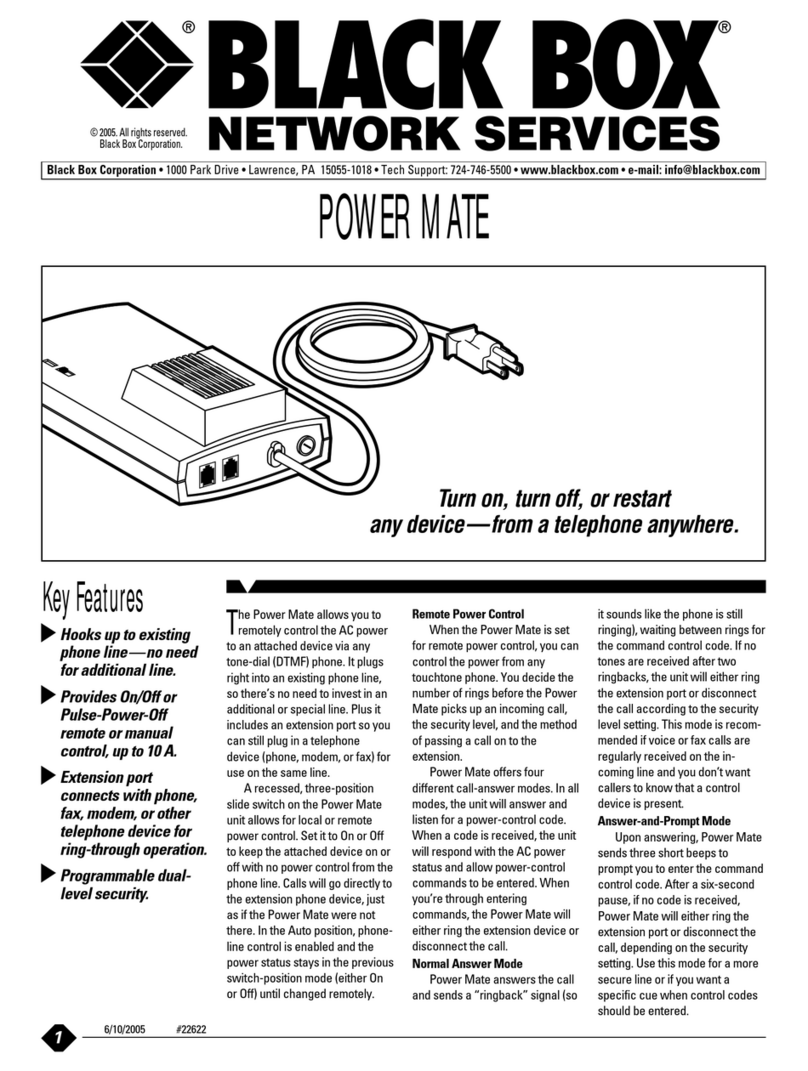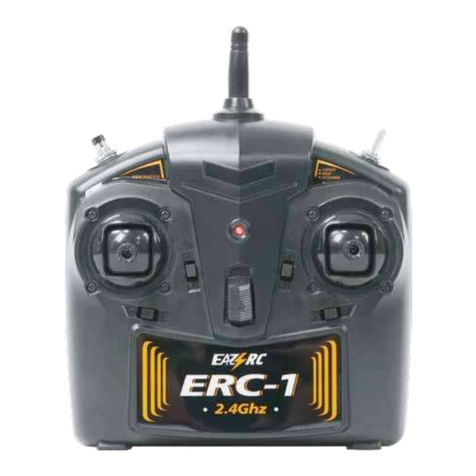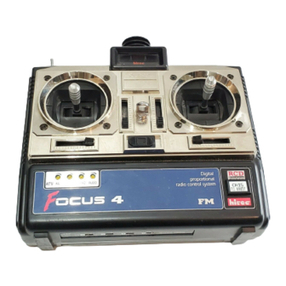
REV 5/3/05 Page 4 of 4
GENERAL INFORMATION
MATCHING SECURITY CODES
Each transmitter can use one of 255 unique security codes. It may be necessary to program the remote receiver to LEARN the security code
of the transmitter upon initial use, if batteries are replaced, or if a replacement transmitter is purchased from your dealer or the factory. When
matching security codes, be sure slide button on the receiver is in the REMOTE position; the code will NOT “LEARN” if the slide switch is in the
ON or OFF position. Program the remote receiver to LEARN a new security code by pushing in the LEARN button on the top of the remote
receiver and then pressing the ON button on the transmitter. A change in the beeping pattern, at the receiver, indicates the transmitter’s code
has been programmed into the receiver. When an existing receiver is matched to a new transmitter, the new security code will override the old
one.
The microprocessor that controls the security code matching procedure is controlled by a timing function. If you are unsuccessful in matching
the security code on the first attempt, wait 1-2 minutes before trying again – this delay allows the microprocessor to reset its timer circuitry –
and try up to two or three more times.
TROUBLE SHOOTING
Should you encounter problems with your fireplace system, the problem may be with the fireplace itself or it could be with the SKYTECH
remote control. Review the fireplace manufacturer’s operation manual to make sure all connections are properly made. Then check the
operation of the SKYTECH remote in the following manner:
1. Check connections from the receiver to the control valve for good positive connections. (Move the slide switch on the receiver to the ON
position if the appliance operates this will confirm that the wiring connections should be good).
2. Check for power from the thermopile to the receiver the voltage with the main burner OFF be no less than 450 millivolts. (Press the learn
button on the receiver if there is a beep sound from the receiver this will confirm there is power to the receiver from the thermopile).
3. Be sure the transmitter’s batteries are properly installed and that the battery output is 12.0 V or more.
4. Check to make sure the transmitter is communicating with the receiver. If the receiver beeps when the ON button is depressed on the
transmitter they are communicating. If the receiver does not beep when the ON or OFF button is depressed on the transmitter, you will
need to teach the receiver the code of the transmitter. This is done by holding the LEARN button down on the receiver and at the same
time depress the ON or OFF button on the transmitter. A change in the beeping pattern, at the receiver indicates the transmitter’s code
has been programmed into the receiver.
5. Make sure the transmitter is within the 15’-20’ range of the receiver.
6. Positioning of the receiver is important. If the receiver is “enclosed” in a metal surround, the operation of the receiver may be affected as
noted below. Reposition the receiver to improve operating range. If the receiver is “enclosed” in a metal surround, this can:
cause the RF signal to get lost and not communicate with the receiver or causing the working distance to be shorter than normal.
NOTE: A receiver located in an area, where the ambient temperature inside the case exceeds 160 0F, will cause THERMO-SAFETY
feature to cut in, requiring you to reposition the receiver to stop the warning beeps, and to “reset” the receiver’s operation.
7. Due to handling and shipping of the unit, handling or dropping of the transmitter by the customer, and heat conditions to the receiver,
some units may need an occasional frequency adjustment. This adjustment is made to improve the communication and operating
distance between the transmitter and the receiver. See RECEIVER ADJUSTMENT.
RECEIVER ADJUSTMENT & RECOMMENDED ADJUSTMENT
A. To adjust at the receiver, use a small slotted screwdriver. Turn the adjustment screw
counter-clockwise about 5 degrees or a maximum of 1/8 turn. This should correct the
distance problem.
B. If that does not correct the problem, return adjustment screw to original position and
then turn adjustment screw clockwise.
This adjustment is like tuning your radio. If you keep turning the adjustment screw, in either
direction, you will go past the proper setting (tuning).
Frequency
Adjustment
Hole






